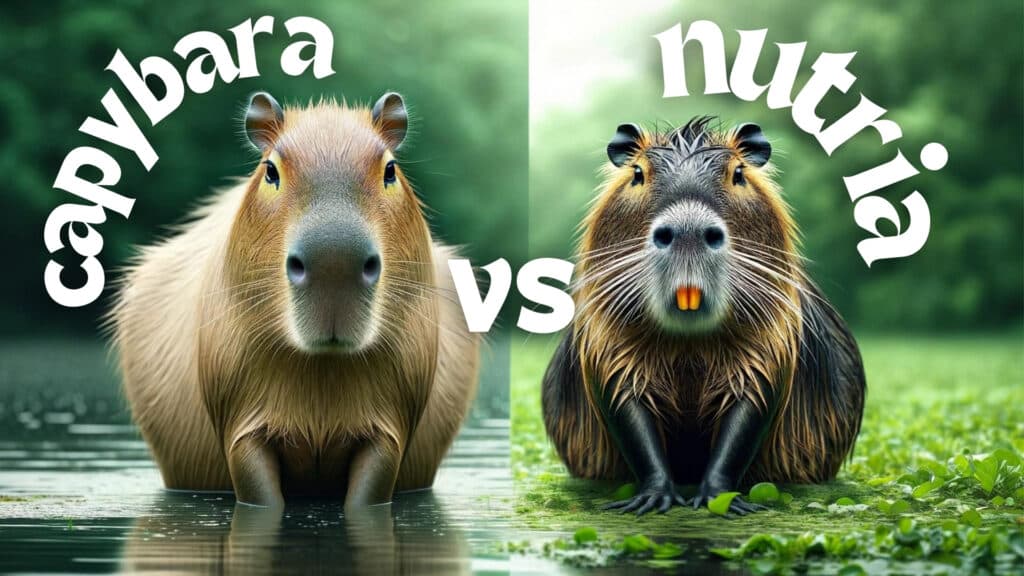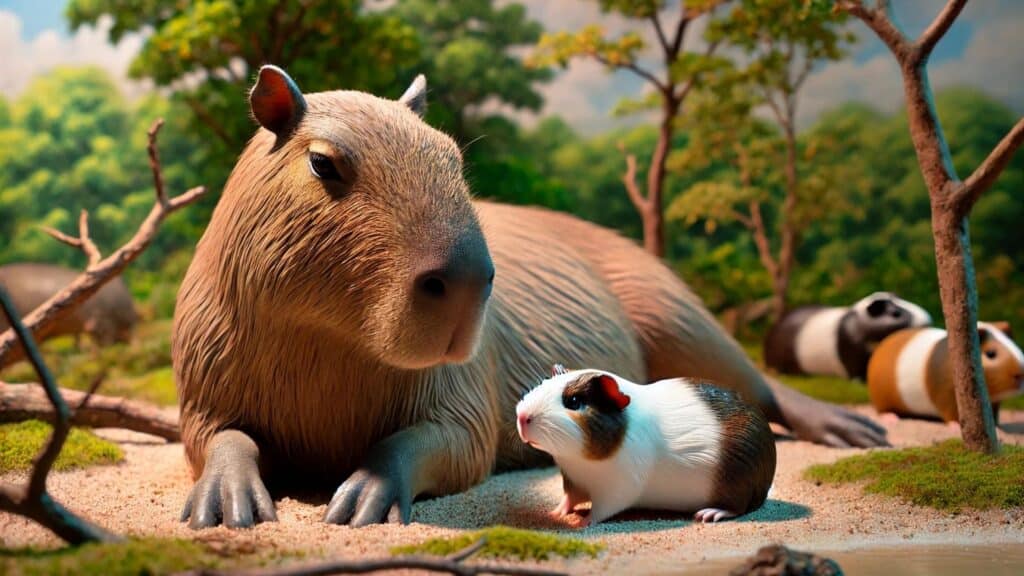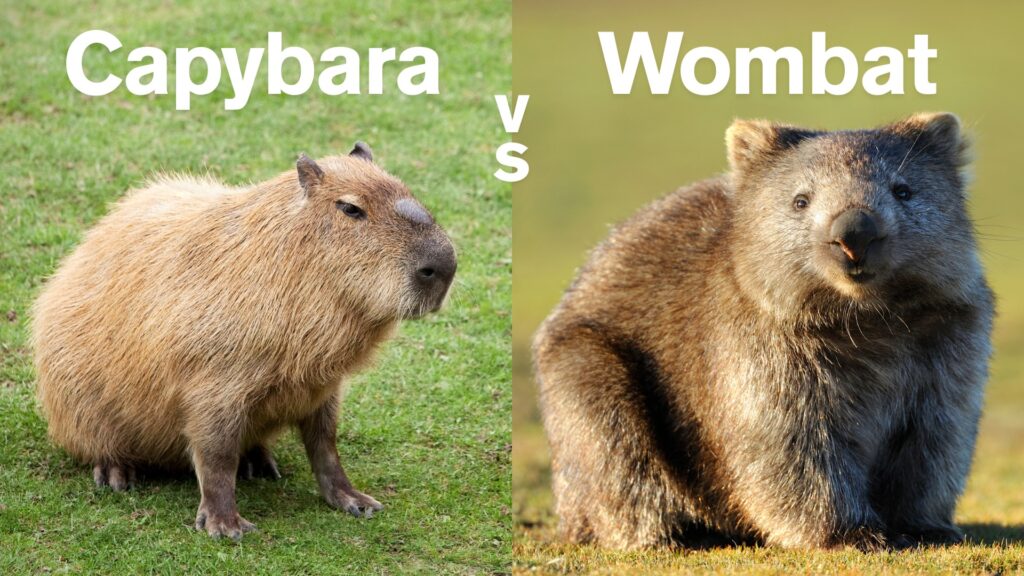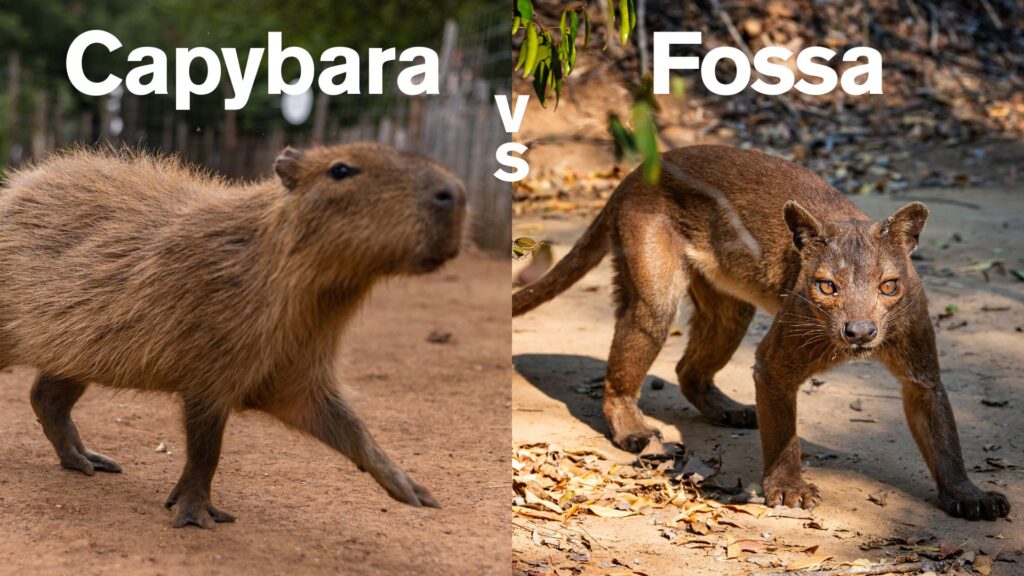Capybara and Beaver. Often found in overlapping habitats but with distinctly different lifestyles and behaviors, these creatures provide a fascinating study in nature’s diversity. While the capybara, known as the world’s largest rodent, boasts a gentle demeanor and remarkable social structure, the industrious beaver is famous for its dam-building prowess and significant ecological impact.
Main Key Differences
The primary distinctions between capybaras and beavers stem from their environmental impacts and social structures. Beavers dramatically alter their environment for habitat and safety, beneficially affecting ecosystems. Capybaras have a lesser environmental impact. Socially, capybaras are more gregarious and less territorial compared to the more solitary and family-oriented beavers.
Comparative Table
| Feature | Capybara | Beaver |
|---|---|---|
| Kingdom | Animalia | Animalia |
| Class | Mammalia | Mammalia |
| Order | Rodentia | Rodentia |
| Phylum | Chordata | Chordata |
| Grooming | Moderate | High |
| Genus | Hydrochoerus | Castor |
| Species | H. hydrochaeris | C. canadensis / C. fiber |
| Family | Caviidae | Castoridae |
| Life Expectancy | 8-10 years | 10-15 years |
| Hunting Ability | Low | Low |
| Loneliness | Social, prefers group living | Less social, family-oriented |
| Space | Needs ample swimming space | Requires water and land access |
| Affection | Friendly with humans | Less interactive |
| Protection | Low | Moderate |
| Energy | Moderate | High |
| Weight | 35-70 kg (77-154 lbs) | 11-30 kg (24-66 lbs) |
| Height/Size | 50-62 cm (20-24 in) tall | 30-40 cm (12-16 in) tall |
| Physical Characteristics | Largest living rodent, less furry, semi-aquatic | Thick fur, large incisors, flat tail, aquatic |
Appearance
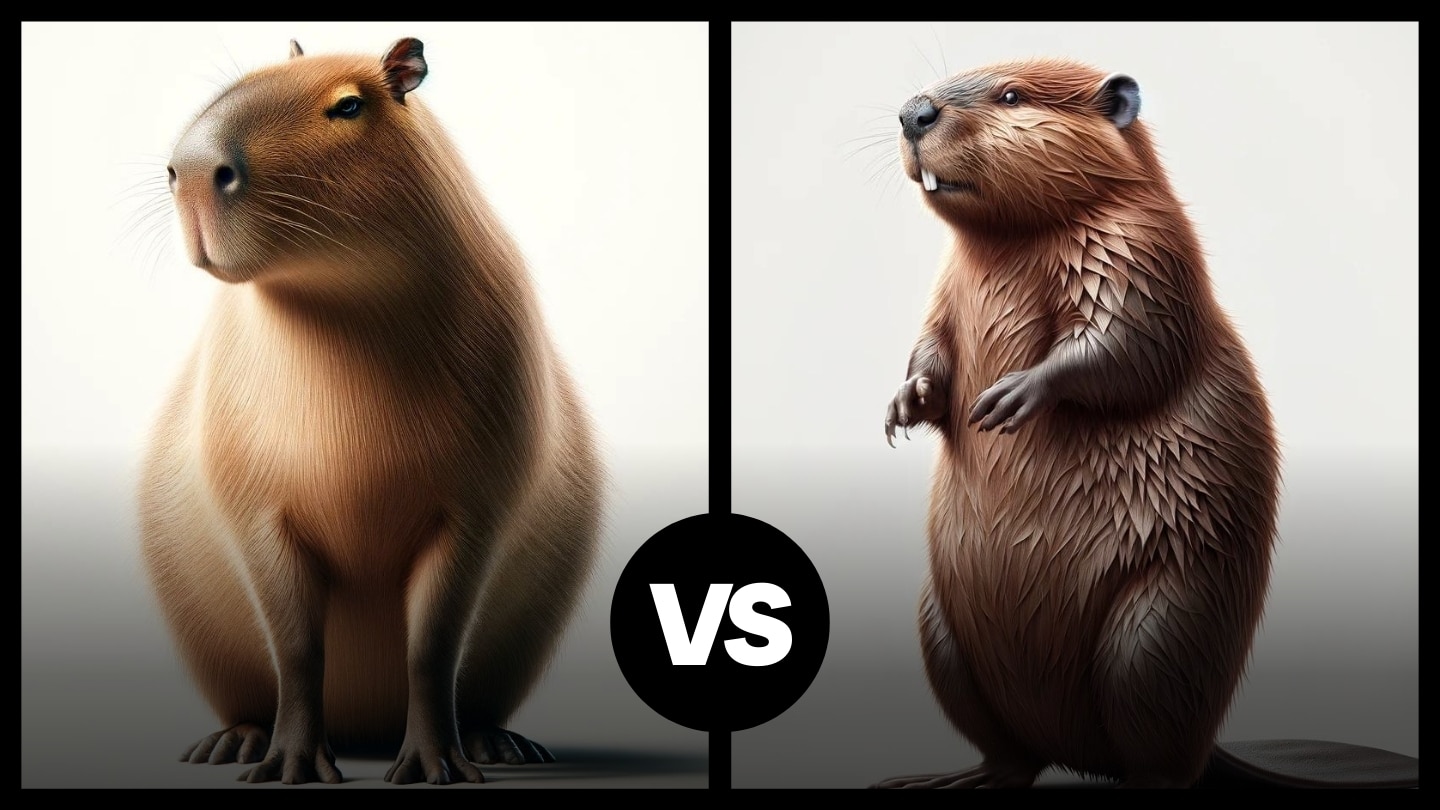
Capybaras have a distinctive appearance, being the largest rodents in the world. They possess a chunky, barrel-shaped body covered in coarse, brownish fur, and have small ears and snouts. Their legs are short, and their partially webbed feet aid in swimming.
Beavers, though smaller than capybaras, are notable for their stout bodies, broad tails, and large incisors. They have dense, waterproof fur, typically brown in color. Their flat, paddle-shaped tails and webbed hind feet are specialized adaptations for their aquatic lifestyle.
Did you know? Capybaras are herbivores with a diet mainly consisting of grasses and aquatic plants, and their digestive systems are adapted for fermenting tough plant matter?
Behavior
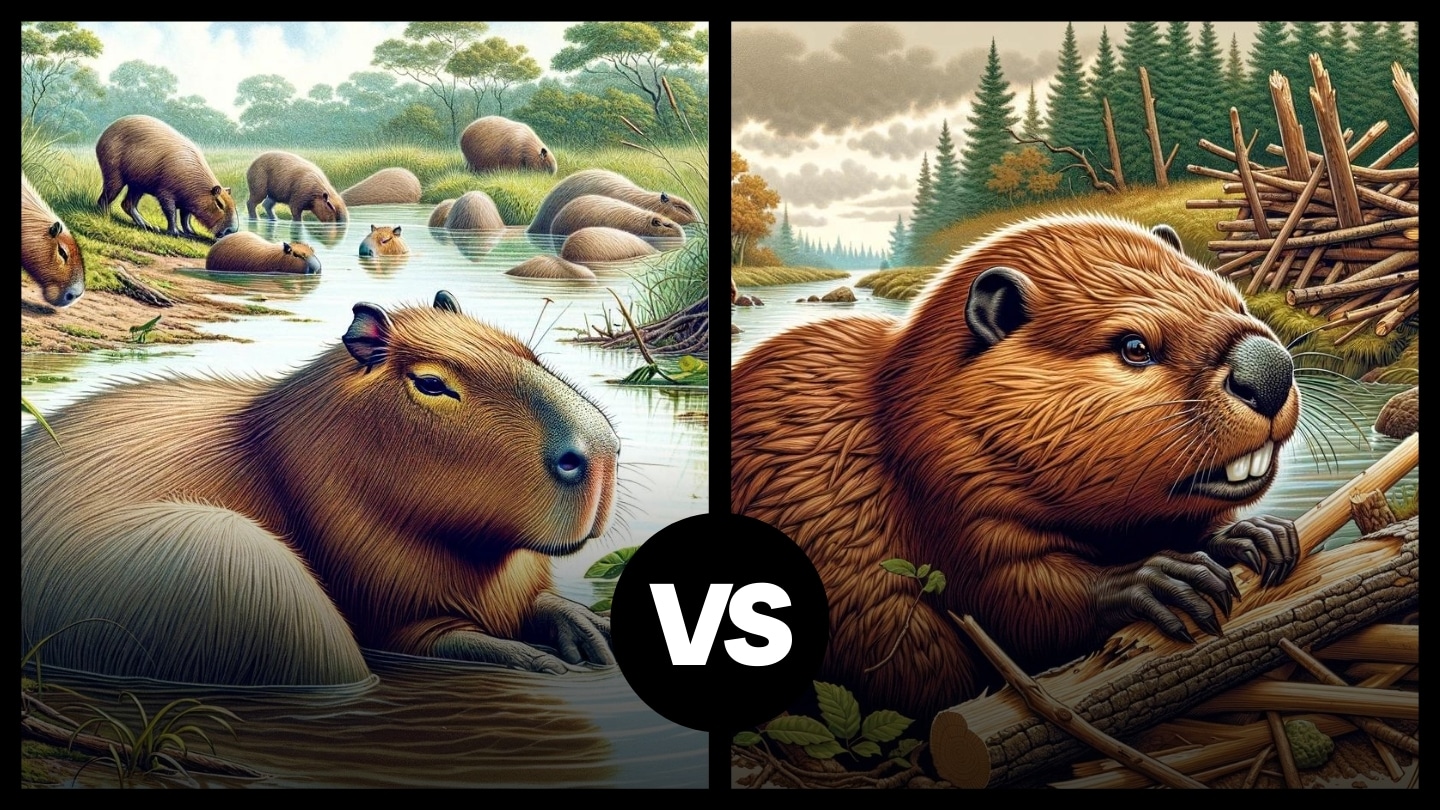
Capybaras are often seen as the epitome of communal living in the animal kingdom. They thrive in groups, which can range from a few individuals to large bands of 20 or more, along the water bodies of South America. This social structure aids in protection from predators and helps in grooming and rearing of the young. Their days are spent lounging in mud or water to keep cool, while nights are reserved for foraging.
Let the kids dive into the world of capybaras with these educational coloring sheets.
Beavers, predominantly found in North America and parts of Eurasia, exhibit a different kind of behavior. Known as nature’s engineers, they are famous for their dam-building abilities. These structures play a crucial role in creating wetlands – beneficial for many other species. Beavers work tirelessly at night, using their sharp teeth to fell trees and construct their homes, showcasing a strong work ethic and determination.
Beyond comparisons with other aquatic rodents, capybaras are also sometimes contrasted with predators—like in this detailed match-up against the fossa that explores behavior, speed, and survival instincts.
Personality
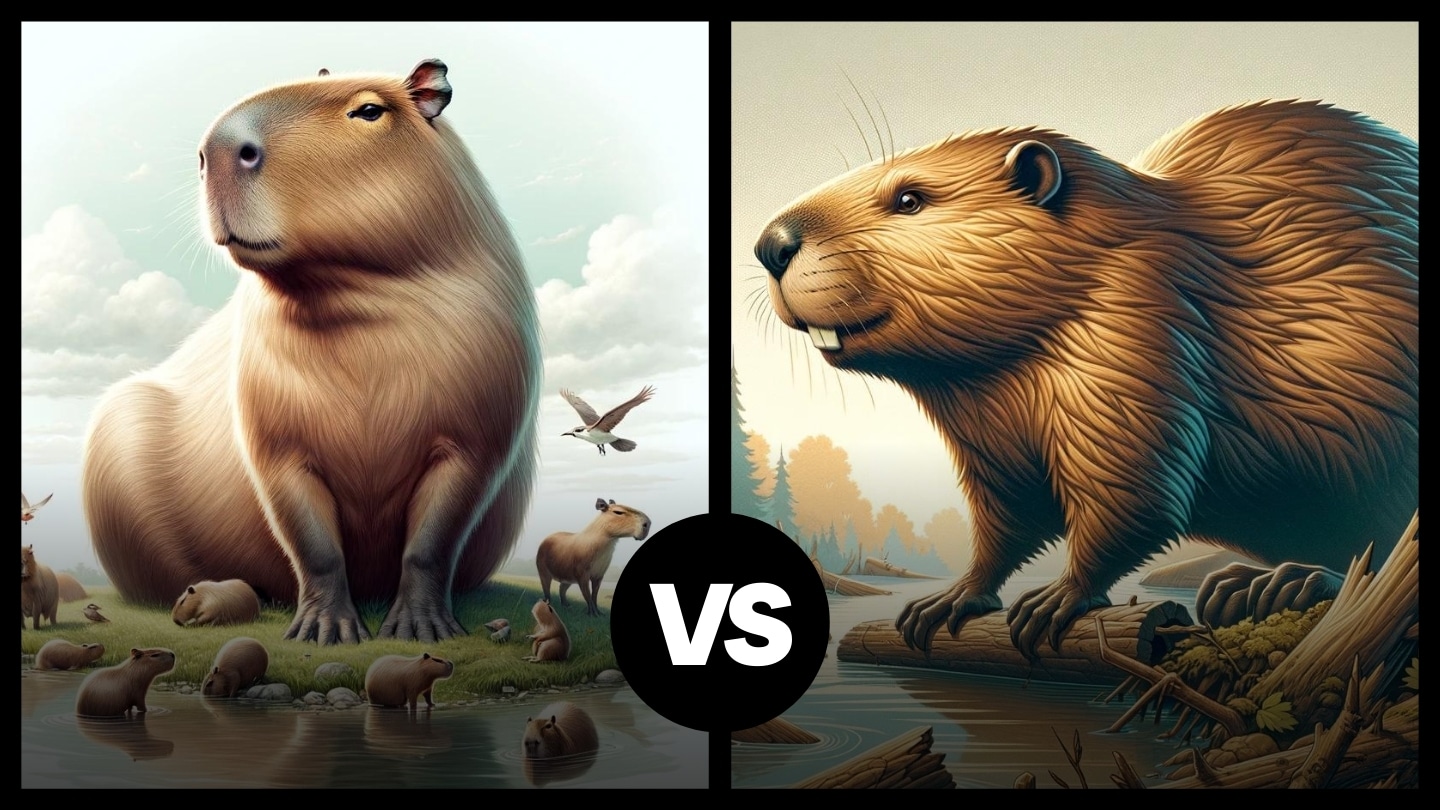
In terms of personality, capybaras are often likened to gentle giants. They are notably calm and even-tempered, displaying a tolerant attitude towards other species, including humans. This demeanor makes them approachable and often a favorite among wildlife enthusiasts.
Beavers, contrastingly, exhibit a more reserved personality. They are fiercely independent and incredibly focused when it comes to their tasks. While not typically aggressive, they can be territorial and protective of their space, especially when it concerns their lodges and offspring.
Once you’ve compared the capybara with other aquatic mammals like beavers, it’s worth seeing how they differ from birds like pelicans.
Did you know? Beavers have a set of transparent eyelids that function like goggles, allowing them to see underwater.
In addition to beavers, people often look at how capybaras compare with upland rodents like marmots, giving a broader view of rodent diversity.
Intelligence
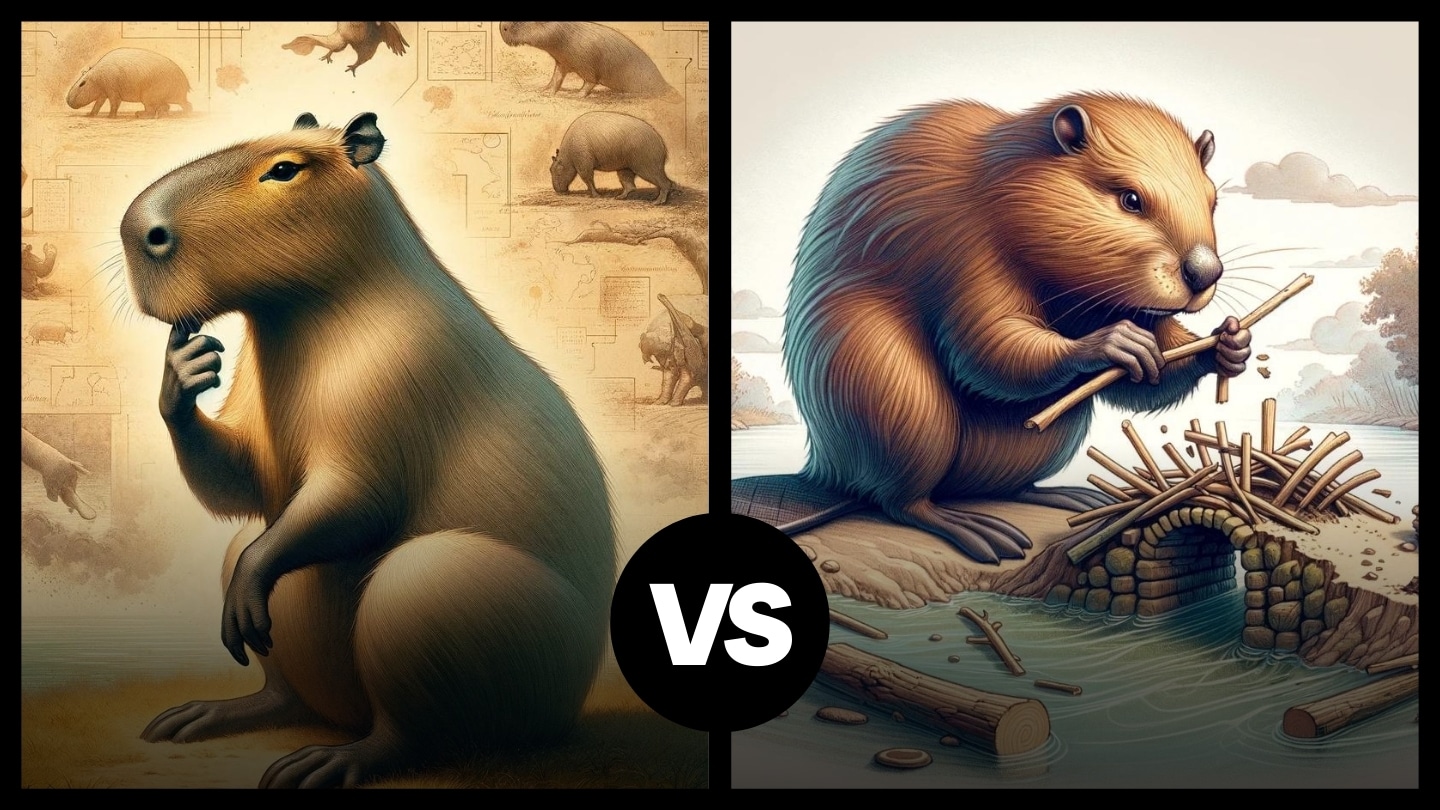
The intelligence of both species is remarkable, albeit manifested differently. Beavers display incredible architectural and environmental intelligence. Their dam and lodge constructions are not only sophisticated but also show an understanding of water flow and its management.
Capybaras, on the other hand, demonstrate social intelligence. They navigate complex group dynamics, maintain hierarchical structures, and exhibit coordinated behaviors such as synchronized grazing and alert systems.
If you find yourself cheering for Team Capybara, our plushie collection has the perfect mascot for you!
Swimming Power
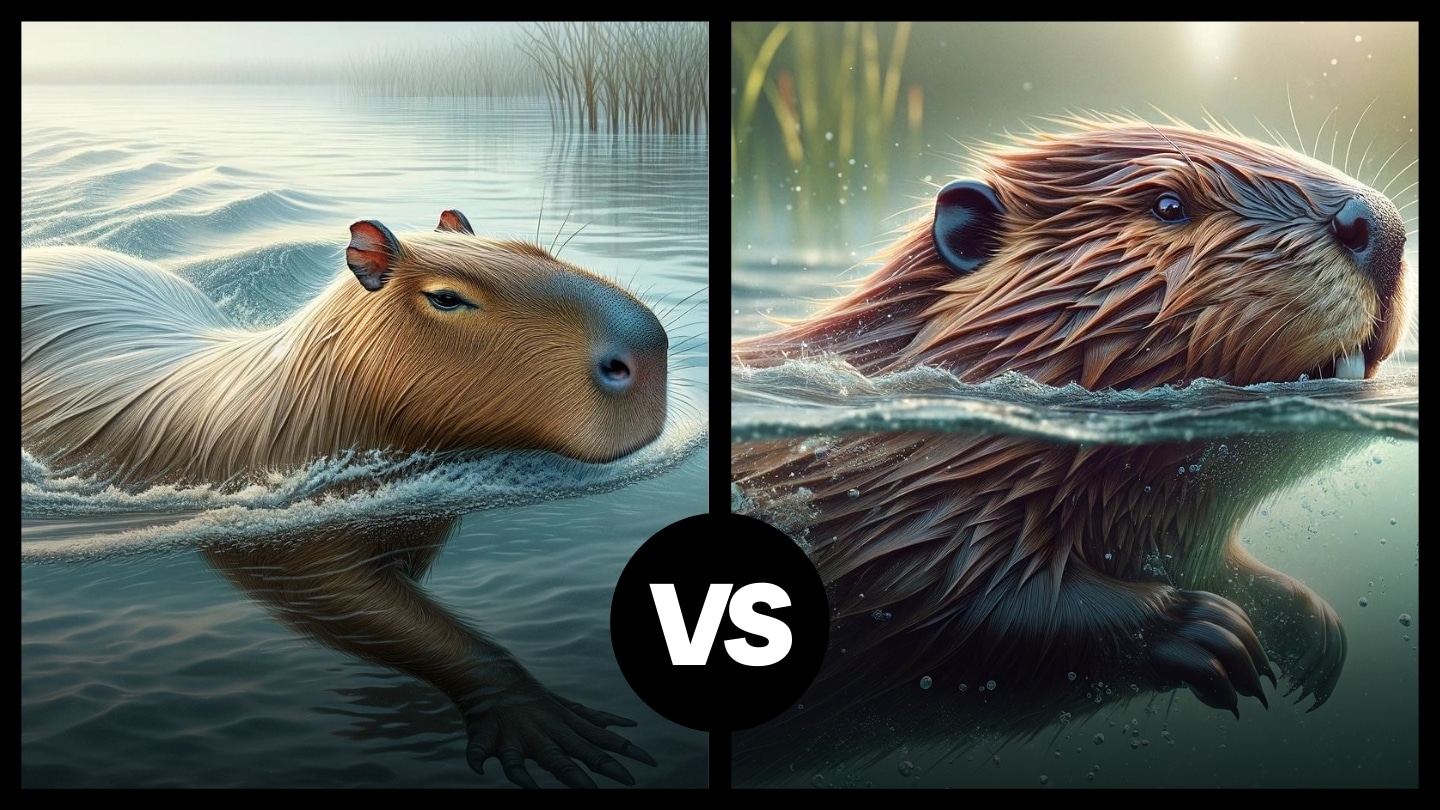
Both species excel in swimming. Capybaras, equipped with partially webbed feet, are graceful swimmers and can even sleep in water, keeping only their noses out for breathing. Beavers are equally skilled. Their webbed hind feet and flat, rudder-like tails make them strong and agile in water. These adaptations are critical for their survival and ecological role.
Running Speed
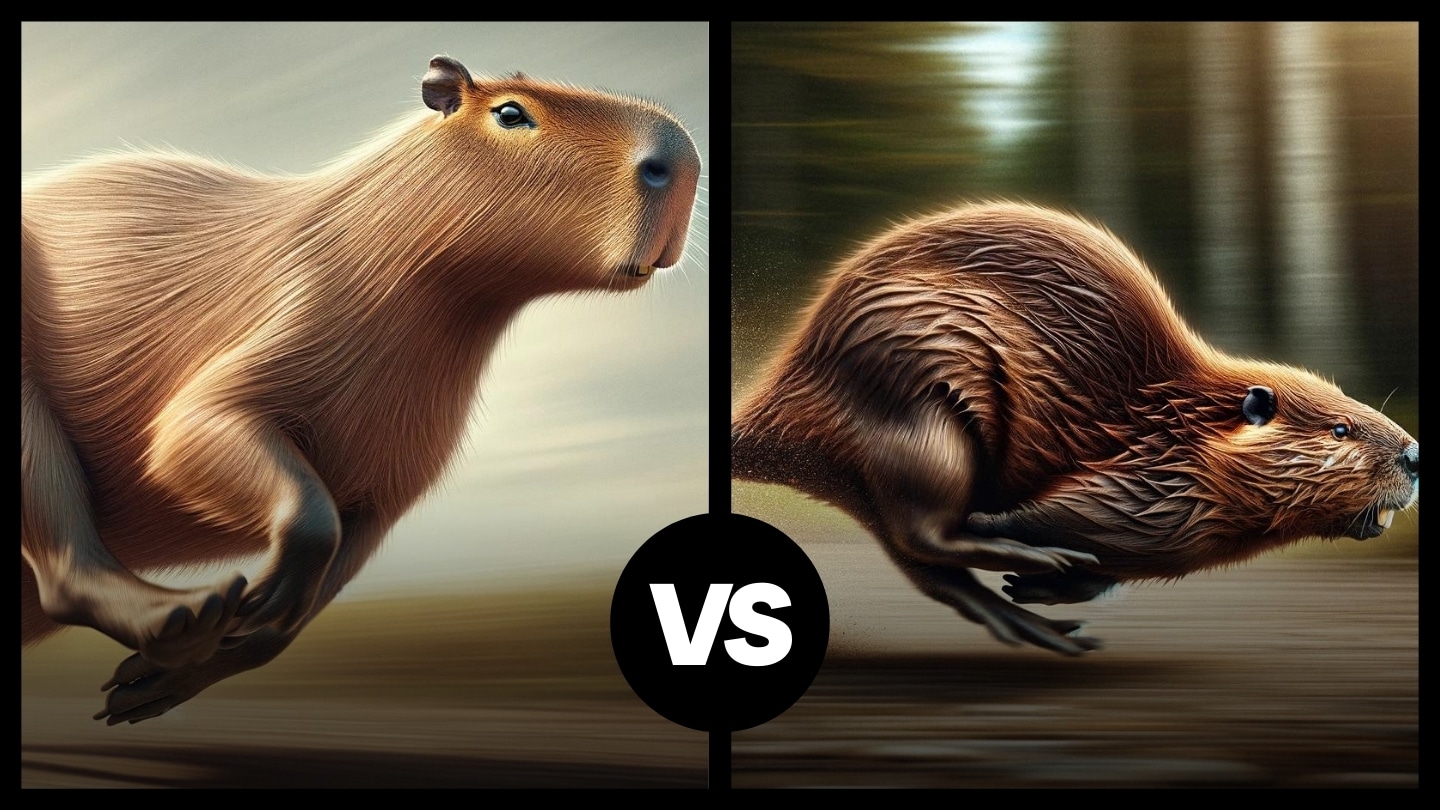
On land, the difference is more pronounced. Capybaras can surprise with their speed, sprinting quickly to escape predators. Their agility is a contrast to their large size. Beavers, however, are less adept on land. Their movements are more cumbersome, suited more for their aquatic life. Capybara can reach speeds of up to 35 kilometers per hour (kph), which is approximately 21.7 miles per hour (mph). On the other hand, the Beaver, known for its aquatic abilities, is slower on land. Beavers can move at speeds up to 6 kph (about 3.7 mph) on land.
Body Language
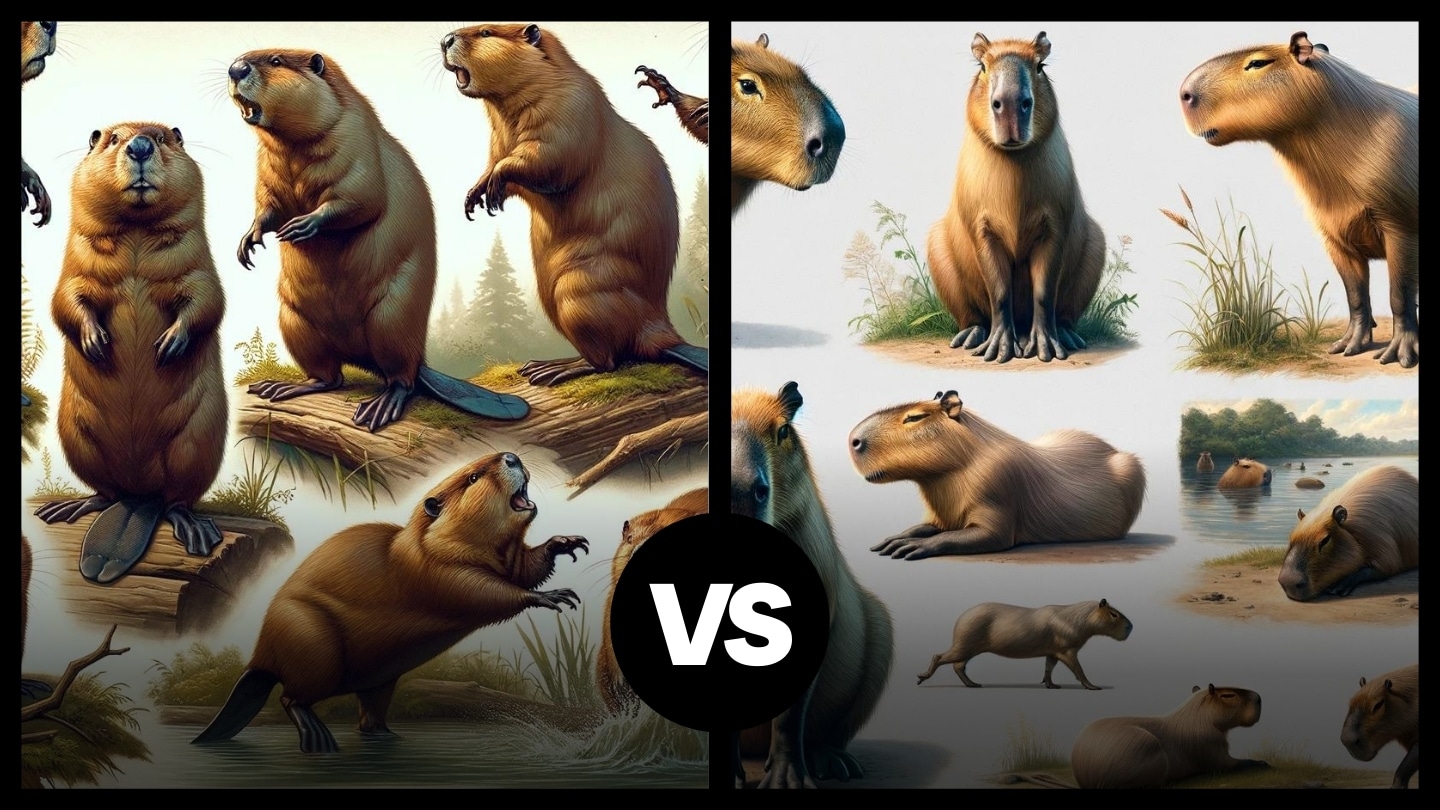
Capybaras communicate using various sounds like purrs and barks and a range of body movements. Their interactions provide insight into their social structure and mood. Beavers use vocalizations and tail slapping on water as a means of communication, especially to warn of danger. This form of communication is vital for the survival of their colonies.
Having explored the intriguing similarities and differences between capybaras and beavers, why not expand your knowledge further? Compare capybaras with another similar rodent, the nutria, in our detailed examination to understand more about their behaviors and habitats.
Conclusion
Both capybaras and beavers are fascinating examples of adaptation and survival in semi-aquatic environments. Their behaviors, from the capybara’s social structures to the beaver’s environmental engineering, showcase nature’s diversity and ingenuity.
While beavers are known for their engineering skills and capybaras for their social nature, wombats bring their own set of remarkable adaptations to the table. The semi-aquatic lifestyle shared by capybaras and beavers stands in stark contrast to the terrestrial, burrowing existence of wombats, making this comparison particularly intriguing.
Understanding these differences and similarities allows us to appreciate the complexity of animal behaviors and the roles different species play in our environment.
